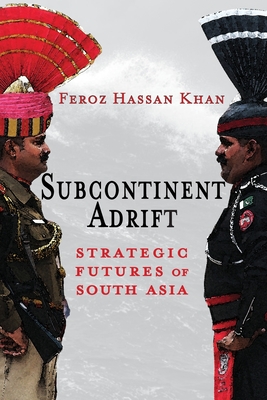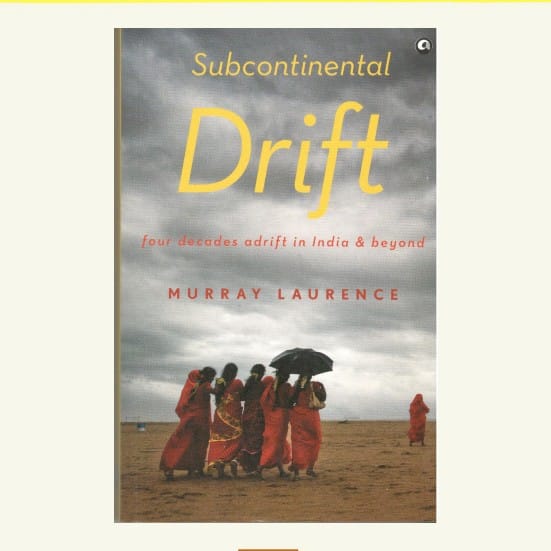By Arnold Zeitlin 1 February 2023
Subcontinent Adrift: Strategic Futures of South Asia, by Feroz Hassan Khan, Cambria Press, Amherst NY, 2022, 258 pages, Paperback, Amazon $44.99. ISBN: 978-1-638-5706-39

Subcontinental Drift: Domestic Politics and India’s Foreign Policy, by Rajesh Basrur, Georgetown University Press, Washington DC, 2023, Paperback, 268 pages, $44.95, ISBN: 978-1-647-1228-50 (1)

Subcontinetal Drift: Four Decades Adrift in India & Beyond, by Murray Laurence, Aleph Book Company, New Delhi, India, 2015, Paperback, Amazon $4.49. ISBN-10: 9383064250

By Arnold Zeitlin
Let’s suppose.
Suppose after a bloody attack by terrorists on government installations in New Delhi, including the prime minister’s cottage, an outraged prime minister, convinced the attacks originated in Pakistan, orders the Indian army to retaliate with “surgical strikes” across Pakistan’s eastern border. aimed at vulnerable Lahore and through the Sindh desert, a move that could split the country.
Suppose Pakistan’s field commanders, their troops falling back under the Indian onslaught, call for help from the Strategic Plans Division, which controls Pakistan’s nuclear posture and which author Feroz Hassan Khan describes as “all powerful”, to prevent a humiliating defeat.
Suppose the Stategic Plans Division, after consultation with the chief of army staff and the prime minister (in that order) orders up the Nasr/Haft-IX short-range ballistic missile, with a range of 60 kilometers and tipped with a TNW — a tactical nuclear weapon. The weapon is launched to the rear of the advancing Indian army in Indian territory.
Suppose what happens next:
* The world is stunned, India, of course. Universal condemnation, including from China, the United States and the UN Security Council, on Pakistan. Millions die. Hostilities halt.
* Or, the world is stunned, condemnation occurs. What’s left of the Indian government orders retaliation. The INS Arihant (a name that means vanquisher of enemies in Sanskrit), a nuclear-powered ballistic missile submarine, lurking in the Indian Ocean, launches a nuclear-tipped missile, obliterating Karachi. Millions die. Hostilities halt. or, a deeply wounded Pakistan further retaliates.
None of these suppositions is discussed in these similarly-titled books by Pakistan analyst Khan and by Indian analyst Rajesh Basrur, although both authors bring Pakistan and India to the brink of nuclear confrontation.
The third book with a similar title. by Australian travel writer Murray Laurence, is a far place from nuclear war. Instead, Murray writes of his adventures in rickety busses and in third-class carriages on long-distance trains, giving his readers a third-class view of India that hardly does justice to the magnificent diversity of that country.
To get back to nuclear war, Khan writes like this about Pakistan’s possible use of nuclear weapons:
“India’s limited conventional war. would quickly deepen and broaden within just a few days ..’the moment Pakistan sees India shifting gears from peace to war…the nuclear weapons would shift to various levels of alertness…moving to areas where they can mate up with delivery vehicles…following any Indian mobilization and simultaneous cross-border attack, Pakistan would respond with a complete mobilization for defense, including a possible riposte into Indian territory. By the time India’s strike corps reached the battlefields, its limited war would likely have turned into a total war, and Pakistan’s nuclear threshold would likely have been crossed many times over.”
Where Khan sees the danger is this:
“As far as India is concerned, Pakistan’s declared response of a conventional escalation and a potential nuclear deployment are nothing more than bluster.”
But Basrur is unsure if the retaliation in the above supposition could ever take place. In a chapter examining the Indian response to the 2008 terrorist attacks on Mumbai, he presents an alternative to nuclear retaliation:
“…India’s options for tackling the source of the attack — that is, Pakistan — were, and still are, very limited owing to Pakistan’s possession of nuclear weapons….Arguably, India could do the same thing to Pakistan — that is, arm rebels who target the Pakistan state and its citizens. This might force Pakistan to back off or, alternatively, exacerbate matters by weakening a nuclear-armed state that is itself subject to terrorist attacks ”
Basrur and Khan approach the subcontinent rivalry differently. Basrur examines four case studies that he claims are examples of what he terms as “policy drift”: the US-India nuclear agreement of 2008; India’s role in the Sri Lanka civil war; India’s nuclear strategy; and the Mumbai attack in 2008 as an example of India’s response to cross-border terrorism. Khan offers a sweeping examination of the India-Pakistan rivalry, including its nuclear risks.
Both agree, however, on drift. Khan, for example, concludes his study this way:
“Sadly, it does not appear that the world has seen an end to violence in South Asia, and the prospects for peace, detente and stability — the good future — remain firmly out of reach. The Subcontinent today is still very much adrift.”
The events that he has studied, as well as others, Basrur writes, “are symptoms of a problem that has dogged India on critical occasions over the years: the lack of incisive policy making and the tendency of important policies to drift uncertainly”,
Seeming to agree wjth Basrur, Khan writes that India suffers from “an inherent grand strategy.”
The two authors do agree on the role of the military in Pakistan, where, writes Khan, the army has an “outsized influence over the country’s national strategy and nuclear policy….The Pakistan army remains the real power broker in the country….”
Basrur, considering why Pakistan and India have been unable to reconcile their differences, blames in part “the dominance of Pakistan’s domestic politics by a miliary with a vested interest in perpetuating the conflict in order to stay in power.”
The three authors of the books in this review have selected titles that play on the so-called continental drift theory that the continents, including the Indian subcontinent, were once a solid land mass that over a billions of years drifted apart until they settled in the places they now occupy.
Both Khan and Basrur have produced valuable, vivid accounts of what could go horribly wrong on the Indian subcontinent. Both are critically hard on their respective homelands. Basrur’s account of the Mumbai attacks, if the circumstances were not so tragic, could be a dark comedy of errors.
As for Murray, his mocking account of tourism in India should be allowed to drift away, otherwise unnoticed.
